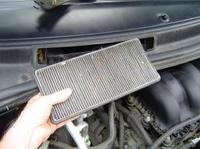Customer Preferences to Trigger a Rise in the Installed Base for Cabin Air Filters in North America
DUBLIN, Ireland--Research and Markets has announced the addition of Frost & Sullivan's new report: North American Cabin Air Filters Aftermarket to their offering.
This research service titled North American Cabin Air Filters Aftermarket provides an overview of the market size, drivers, restraints, and trends influencing the market. The study also includes an in-depth analysis of the competitive structure and market shares of companies in this space. In this research service, Frost & Sullivan's expert analysts thoroughly examine the following aftermarket: Cabin Air Filters.
-- Cabin Air Filters (CAFs) : CAFs are designed to remove harmful pollutants such as smog, dust, exhaust fumes, airborne pollens, soot, tire particles, and bacteria by filtering them out before they enter the cabin compartment, thereby protecting passengers and reducing malfunctions of the vehicle’s heating, ventilation, and air conditioning (HVAC) system. Its fibers are made of polypropylene or polyurethane polymers with a fiber adhesive, such as plastisol. Most of these filters are sold in a plastic frame, while some are available as soft media packs without housing. Each filter holds a cartridge that contains an active ingredient that destroys microorganisms. Generally, CAFs have a useful service life of about one year, or 15,000 miles, before needing replacement.
-- Particle Filters: A particle filter -- or an electrostatic filter -- is a single-stage filter that traps solid particles, but does not filter odors. These filters are first-generation products.
-- Combination Filters: A combination filter has two stages, including one that eliminates dust, pollen, soot, and spores and another that filters out toxic gases as well as odors. Combination filters are upgraded systems when compared to particulate filters and may cost several dollars more per unit.
Market Overview
Higher Replacement Rates within Existing Vehicle Parc Stimulates Growth in the North American Cabin Air Filters Aftermarket
The growing concern about the impact of pollutants on passengers is expected to drive the North American cabin air filters (CAFs) aftermarket ahead. Revenues for the aftermarket are likely to be generated mainly from truck and car owners that annually replace the CAFs in their vehicles. Integrating the replacement of CAFs with routine maintenance procedures such as oil changes can drive the aftermarket without a corresponding change in the installed base, states the analyst of this research service.
However, market development is limited due to low consumer awareness. To achieve significant growth rates, manufacturers can proactively educate distributors as well as installers that can in turn educate vehicle owners about the maintenance needs for CAFs. This can be accomplished through sales training, consumer-oriented web sites, and installation instructions to help service technicians locate the filters and change them in real time, remarks the analyst.
Customer Preferences to Trigger a Rise in the Installed Base for Cabin Air Filters
Although the CAF aftermarket in North America is yet to achieve its full potential, there are considerable growth opportunities for manufacturers and distributors since most vehicle owners are concerned about the quality of air in their vehicle cabins. Currently, automotive majors in the region offer CAFs as an option only in select models. Cars and trucks are not factory equipped with CAFs due to cost as well as space constraints, and this situation is not likely to change immediately.
Nevertheless, the number of vehicles that carry the filters is likely to increase gradually due to greater sales of imported products. Growth rates are expected to accelerate as automakers respond to consumers’ preferences for interior cabin filtration, which is available in imported vehicles, notes the analyst.



